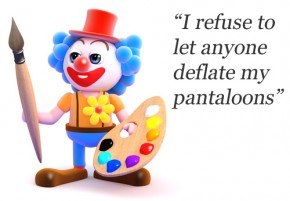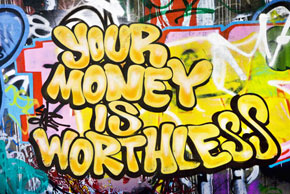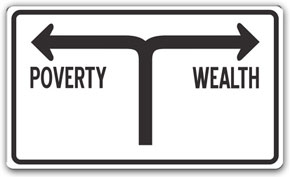As a beginner artist starting out on the road to art mega-superstardom its important to consider your artists signature. Maybe you’ve been studying drawing lessons for a while (maybe even our complete drawing course) and you know you’ve got the skills, but now when its time to put that final finishing flourish onto paper you’re stuck, not knowing exactly what, where and how to get that signature down. Don’t worry. I’m here to help.
Lets think for a moment about artworks by your favourite famous artists. Now imagine the famous artists signatures on those artworks in your minds eye. Chances are that quite a few signatures spring to mind, each one unique and instantly memorable. That’s what you need to happen when people think about your work too. Your signature needs to pop into peoples minds at the mere mention of your name.
So you need an artists signature of your own, a good one, an instantly recognisable one, worthy of a star in its ascendancy (thats you). But what should it look like? Where should it be placed on an artwork? Should you just use your initials. Should you use your full name. Do you need one at all? To get you started on the path of art signature-ness here are some things to think about:
1. Consider NOT using your regular signature
While your regular signature gesticulations may look good on the bottom of important letters and bank cheques it might not the best kind of signature for your artworks for your own security. In these days where identity fraud is rife do you really want your personal signature freely available to every cyber-crook out there? Probably not a good idea. So maybe think about having a different signature for your artworks.
2. Don’t be a Scribbler
Often our regular signatures are not very readable. You need your signature to be unmistakable and clear so that your fans and collectors can instantly read your name and recognize everything you do.
3. Full name? Initials? Surname only?
Does your name sound more impressive if you use just your initials plus surname? Or does it have a certain ‘je ne sais quoi’ if you use only your surname? Maybe your parents were kind to you and carefully selected a first name and surname combo which just rolls off the tongue? Try saying your name out loud in different ways. Unless your name is Archibald Smegglethwaite you are bound to find some combo that works. Whichever you choose just be sure to use it consistently.
[et_bloom_inline optin_id=”optin_3″]
4. Your Signature is Your Brand
Everyone recognises the swirly word logo of Coca-cola. Your signature should be the equivalent of that (not literally); something that is easy to read, easy to recognise, easy to remember, and an expression of your art and personality at the same time. When you finally decide you are going to hold your own exhibition you need every artwork to consistently identify you as the superstar creator artist, with consistent branding signature-ness.
5. Designing your Signature
I suggest you try writing your signature in lots of different ways. Experiment. Write it a few hundred times on paper with lots of variation and then pick the best version, the one that feels ‘just right’ for you. Also consider creating versions in thick felt tip pen too, for situations when a bolder statement is necessary.
6. Your Signature is your Logo
Hand your favourite versions over to a tame graphic designer for conversion into a logo or convert it yourself. Your signature is likely to be used for promotional purposes on exhibition invitations, charity show flyers, catalogues, signage, merchandising, your artist business cards (see my tip for artist business cards so cool people will be begging for them!), and web sites in addition to your artworks so this is well worth doing.
7. Practice makes Perfect
Practice writing your artists signature often so it becomes as natural to write as your regular signature, so that you can instantly sign your completed artworks and body parts of adoring fans with a confident flourish.
8. Be Tidy and Consistent
All too often I see artworks that look brilliant but which are let down by a signature which is sloppily written, sloping awkwardly, too close to the edge of the canvas, mount or frame or just plain hard to see. Take time to consider your signature and its careful placement. Measure its ideal placement if you have to. Don’t rush to sign an artwork just because you want it to be finished. Take your time and get it right. Of course for some artists though a sloppy signature is part of the appeal, but even the sloppiest artists do sloppy with style (even if it doesn’t look like it).
9. Cheat If You Have To
When I use my own artists signature I like it to be placed in just the right spot and at just the right size. Most times I even consider the compostion of the signature as part of the artwork. It suits my pixel precise art style. To get this effect I sometimes cheat and trace my signature onto the piece using graphite transfer paper (we have a video on our Youtube channel about transferring sketches which might be useful). At the very least I’ll make a straight line on the artwork on which to sign. That way I can maintain quality and consistency of the finished product and ensure it looks great every time.
10. Where to Place a Signature
Usually it resides bottom left or bottom right, with enough room to sit away nicely from the edge of the page or canvas, and taking into account any framing and mounts. Some Artists like to hide their signatures in other locations, but remember the bottom of the artwork (if its a drawing or painting) is where interested collectors will look first. Don’t make them work too hard. So there you have it. Ten ideas for your signatures success. Now go forth, create astonishing artworks and ensure that adoring art fans can instantly recognise your stylish yet unmistakable name gesticulations.
More posts from me:
- How to get in an art gallery (and how I did it twice)
- Art collectors – what do they really want?
- Selling your art – the golden rules of art sales hand-to-hand combat
Interesting art signature posts from other sites:












Excellent information, Stuart!
This is very interesting Stuart because I have never been overly pleased with my signature and I will definitely keep on practicing to develop my true arty style…
This is very helpful. I’ve been debating just the first name and how to sign my pieces as my art is distinct. Who’s isn’t? Don’t have the website up yet but shooting for Spotify and thinking about Square Market. Thank you.
This was really interesting to read, I have gotten a lot of compliments on my first name, they say it sounds elegant. Instead of just my initials I think I’ll actually start writing out my first and last name out on my drawings in some pretty lettering.
These tips are very helpful, however, the art teacher I had in middle school actually taught us that when we sign our artwork, we should NEVER use pen because we live in the age of technology that allows pen signatures to be forged by machines. We were told to always use pencil since the pencil would break if a machine tried to duplicate our signature.
Interesting thought. Only really a worry though if your art is going to fetching large sums enough to attract forgers. Making sure that your artworks are sold with proper documentation to form provenance through verifiable channels might be a better way, since anything can be forged.
wow… thanks, I have created my signature while reading this blog. I love it!
I’ve been using just my initials for years. Wondering now whether to change to my full name… thanks for the advice.
That depends if you want people to know who created the artwork by simply looking at your artwork. If your initials are unique and distinctive enough, and if people can google your initials and your name comes up, then maybe theres a case for not using your name..but otherwise… 😉
is their a better way to write your signature ,than with a brush for example if I was painting with acrylic I would paint my name, (my signature), with a brush, and stressed about it, is their something easier to use, like an acrylic pen that can be sealed.
I used to use acrylic ink in on the end of a felt pen that I had washed the ink out of. These days there may be pen brushes that that have a reservoir for acrylic ink. These days though I just prefer to paint the signature though. Transferring the signature using graphite transfer paper onto the right spot on the artwork and then painting over that removes a lot of stress for me…I can paint over any bits I get wrong… thats okay for me as my signature looks a bit ‘designer-ish’.
Thank you. I’m glad I found you. This is a past tense statement. I taught art for 10 years, won 20 first prizes and sold here in Australia and overseas. My mistake was taking too many orders! Too much, and I gave up. I’m now a violin teacher. Two years ago, my daughter bought me a canvas, brushes, and paints. I looked at it occasionally. Two weeks ago, I took up the brushes again. I am so amazed that I can still paint – so much so, that I’ve shown everyone and all my students my painting. However, it’s sitting there without a signature. Having read your hints, I might get the signature on the painting before the next 2 years pass. Thank you.
Comment great information
Great information very helpful.
Two questions:
Should a signature be inside of a drawing or our side of a drawing
My initials are NTD. Do these initials in this order signify a chemical or anything other than initials?
Thank you
Its entirely up to you where you place your signature, but if you want people to find it easily then bottom left or right with inside or outside the drawing would make sense. If you look up NTD on Google there are some interesting acronyms associated with it. My favourite was New Taiwan Dollar, the currency of Taiwan 🙂
All of my names are very common: Deborah Lynn Jones (maiden) Scott. Do you ever recommend working under a pseudonym?
As long as you are consistent in the long run I’d guess it doesn’t matter.
Would there be any reason to include the date? Dad always said “a picture is no good without a name and a date “. Is that true for a piece of artwork? I am sculpting Clay and casting a picture style wall hanging. If there will be numbered castings would I put that near the signature or on the side or back ? (15/50)
I tend not to put the date visible on the front of the artwork. The reason being if its got a date which is not recent (ie the artwork was made in the past but never sold), then the artwork might look like ‘old stock’ that has been hanging around for a while and thus discourage a buyer. In this case I might consider putting it on the back instead.
Is it common to break the pencil rule if you want to sign in ink? I have a limited series I signed the first in pencil but it’s not easy to see the signature. I think I’ll do black colored pencil but thought about ink too. Is this OK?
I’ve mainly seen prints in galleries signed in pencil (and that would be my particular choice for my own works as it always looks nice to my eye). Have you considered using a softer / darker pencil?
Can I use my mothers maiden name?
You can use any name you like… just be consistent
Thank you so much for this because it really helped me as I was trying to figure out how to place this on my own work.
Do you think using a first and middle name is ok if it rolls off the tongue better?
Of course.
This was exactly what I was looking for! I never even thought of not using my real signature. Thanks so much!
Great article. What do you suggest if I’m going to sell my art under my business name? I am going to register a name for a site/online shop and maybe sell in person at fairs/exhibitions sometimes. I prefer not to put my real name online so I am not sure what to do for consistency. I was thinking of signing my real name in my own language while selling it under my shop name. I’m not sure if that’s a good idea, though, since you mention the need of being recognizable or found in a google search.
That all sounds a bit complicated. I’d say keep it as simple as possible. One name for everything.
Great article very useful. I had two comments from family today saying my signature was a bit too big! They say it draws the eye. How big should it be? I paint quite large paintings and mostly oil, so I tend to use a brush and colour I’m already using. What do you think? Thank you.
It can be as big as you like. If it dominates the composition though and immediately draws the eye before anything else then maybe it’s too big 😉
I’m having trouble deciding on my signature. My given name is Barbara Anne Fillion. It’s too long as some of my paintings are 10×10. I’m open to suggestions.
I live in Spain and was signing my work with my name, Rod Davis. Small, and a bit hesitant. Then I got an email asking if I recognised a particular painting, signed Rod Davis, also small and a bit hesitant. It sort of looked like one I thought I remembered from many years ago, that I gave to a girlfriend of that time. But it turns out it wasn’t mine; there is another Rod Davis, also living in Spain. So now I sign my work DAViS, italic, bolder, with a bigger ‘i’ and not at all hesitant. Message: try to make sure your signature is unique, and if you have a fairly common name like ‘Davis’, experiment with some sort of device to make it unique.
I paint abstract art. Sometimes it looks good any direction I turn it. How do I choose which side to turn it? What if the person turns it in a different direction than how it was when I signed it? Will it still look good sideways or even upside down?
I had the same question!! I think I’m just going to sign it somewhere in the painting and then provide additional information (I.e. My name, date and name of painting on the back).
I often make paintings as a set and sometimes each painting is rather small (say 6″ by 6″). Should i be signing the face of each painting or only one of them? My signature is small (first 3 letters of my name and the year).
I’d sign every one of them.
A colleague signs paintings she basically copies with her name and then the phrase, “After [the name of the original artist], e.g., “After Vincent Van Gogh.” My own practice recently is to photograph a painting I want to work with, then flip it horizontally in a photo editing app, change a few other features of the work (shapes, colors, etc.). Some of the works are good enough to offer for sale in my online store. All the original works are by living artists, so I know they own the copyrights. Do I have the right to sell my own works, which are based on originals, but quite opposite in their orientations and somewhat different in coloring, land features, numbers and shapes of trees, etc.? Should I sign my own works “After Original Artist”?
My husband starting painting geometric/linear designs on various size canvases, mostly 20×20, so the painting can be hung in any direction or even diagonal, dependent on the buyer’s preference, so there is not a defined bottom right or left corner. We are thinking of signing on the back – either on the canvas or inside the wood frame…..any other suggestions?
These tips answered almost all my questions regarding signing my drawings.
Thank you very much.
My husband has started a website to market our 18 yr olds artwork. He has consistently used a certain font on all of her artwork that he has uploaded. I argue saying it should be her actual signature but he is saying that font is her logo. I think it should be HER signature, there’s nothing personal about that font.